September 11, 2023 Did You Know?
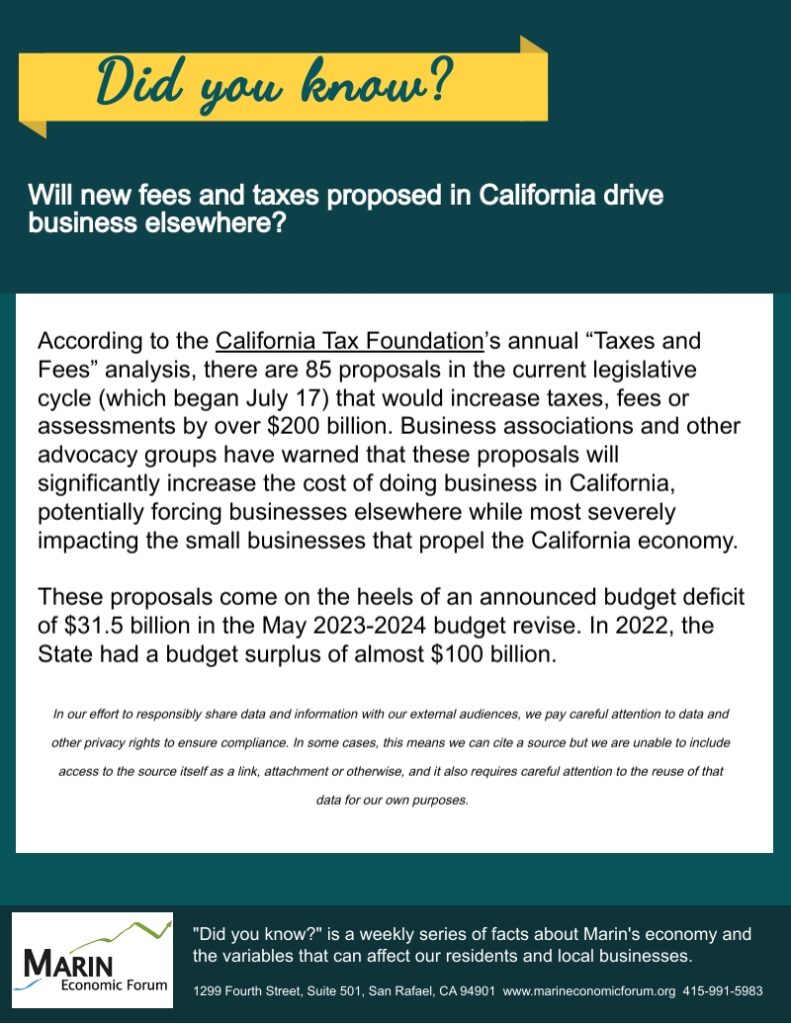
Be the first to receive updates and news from MEF by subscribing or liking us on our social media pages: Facebook, Twitter, and LinkedIn!

Be the first to receive updates and news from MEF by subscribing or liking us on our social media pages: Facebook, Twitter, and LinkedIn!
August 2023
| Although COVID made a late summer cameo, it has for the most part been forgotten as a factor affecting today’s economy, as inflation, the stock market and mortgage rates dominate economic headlines. However, MEF continues to monitor the economic recovery from the pandemic times, considering it had such a significant impact in Marin in terms of business revenues, closures, and the labor market. In the “Monthly Economic Briefings” provided by MEF, we normally present a set of economic indicators that we rely on to measure the county’s economic health. Most of those indicators are routinely used by economists and policymakers while on occasion we identify alternative measures that help us understand the situation. Recently, sales tax revenues and newly available data on household tax returns, reported by the Internal Revenue Service (IRS), have been a relevant datapoint for analysis on the COVID economic recovery, including measuring Marin relative to the greater Bay Area. Let us start with the issue of migration and household income by county during the pandemic. Recall the narrative of the “Bay Area exodus” from urban cores, like San Francisco, as individuals gained the opportunity to work remotely. The appeal of relocating to a lower cost region became a compelling offer for many Bay Area residents. Companies like U-Haul regularly reported data confirming the flows of people moving and we learned that Bay Area residents were locating to places such as Sacramento and Seattle. The departure of major local corporations, like Tesla and Charles Schwab, also occurred at the same time, suggesting the Bay Area’s days as a leading region for high paying jobs and talented workforce were numbered. According to the IRS, (and analysis by EIG), Marin County aggregated household incomes increased by $216 million during the tax period of 2020-2021. That means despite the adverse impacts such as job loss and slowing of economic activity, Marin’s aggregated household incomes increased following the height of the pandemic in 2020. For comparison, Contra Costa County experienced a loss of $131 million while Alameda, San Francisco and San Mateo counties experienced losses of household income in the billions of dollars. We also know that population loss did occur in Marin at the same time, suggesting that the households that migrated to Marin County in the period had higher reported incomes than the net value of households which left. Strictly from the perspective of economic recovery, higher household incomes are a positive indicator. The next area of analysis is in tax revenues, specifically sales tax revenues across the county. In 2019, pre-pandemic, Marin County (all jurisdictions) collected $57 million in sales tax revenue, higher than the previous 4 years. In 2020, as expected, that figure dropped to just $52 million as business closures and other pandemic impacts affected the economy. In a sign of surging recovery, sales tax revenues jumped to $64 million in 2021 and $65 million in 2022 (Marin County Budget Overview FY 23-24). Again, from the perspective of tax revenue, or local sales of goods and services, Marin County has dramatically recovered economically to a level unseen before. Turning again to IRS data, Marin County was recently named “the best place for small businesses” according to SmartAsset, a free online service connecting consumers to financial advisors. SmartAsset analyzed tax returns of households in Marin County and found, relative to other counties in California, that there was a higher proportion of households filing as businesses (42% compared to just 25% of all Californians). This data suggests a high proportion of our residents are business owners and have likely weathered the severest moments of the pandemic storm. At the same time, local jurisdictions have reported that business license applications have increased over 2019 levels following a nation-wide trend that has seen new business starts up over 20% since pre-pandemic times. COVID itself is not necessarily in the rear view and MEF recognizes that not all businesses were able to survive the effects of shutdowns or even disruption to business models that may affect revenues. However, when looking at tax data as one form of measuring recovery, Marin County has performed very well, in fact better than most of its regional peers. In our effort to responsibly share data and information with our external audiences, we pay careful attention to data and other privacy rights to ensure compliance. In some cases, this means we can cite a source but we are unable to include access to the source itself as a link, attachment or otherwise, and it also requires careful attention to the reuse of that data for our own purposes. |
Mike Blakeley, CEO
Marin Economic Forum
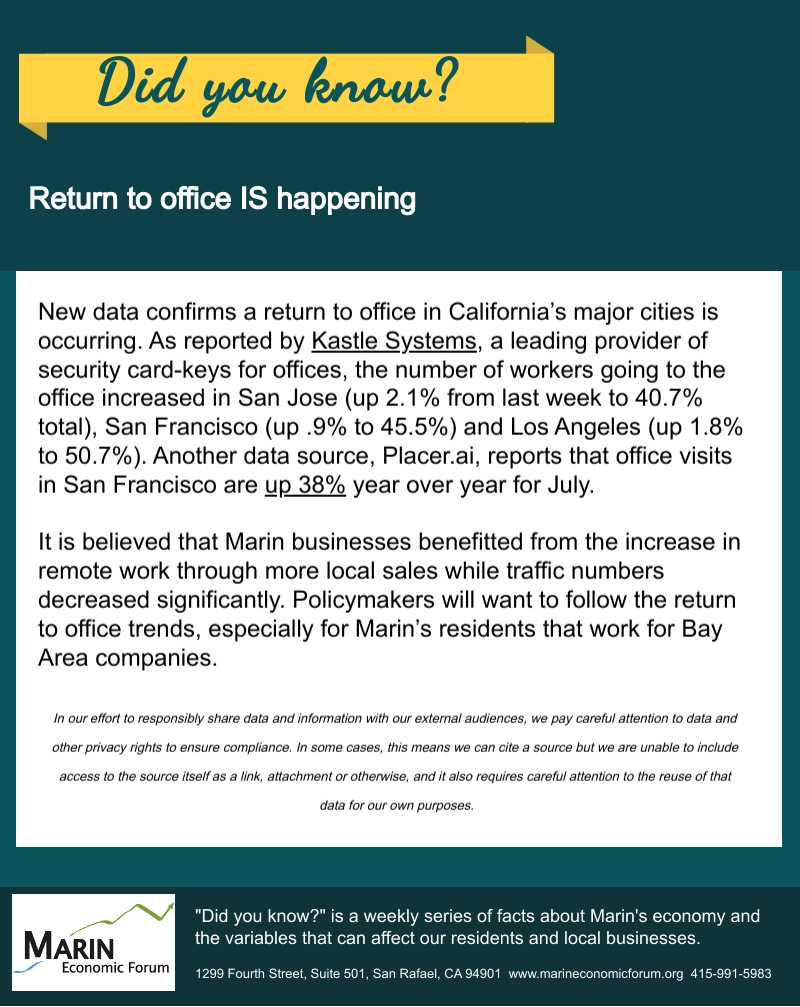
Be the first to receive updates and news from MEF by subscribing or liking us on our social media pages: Facebook, Twitter, and LinkedIn!
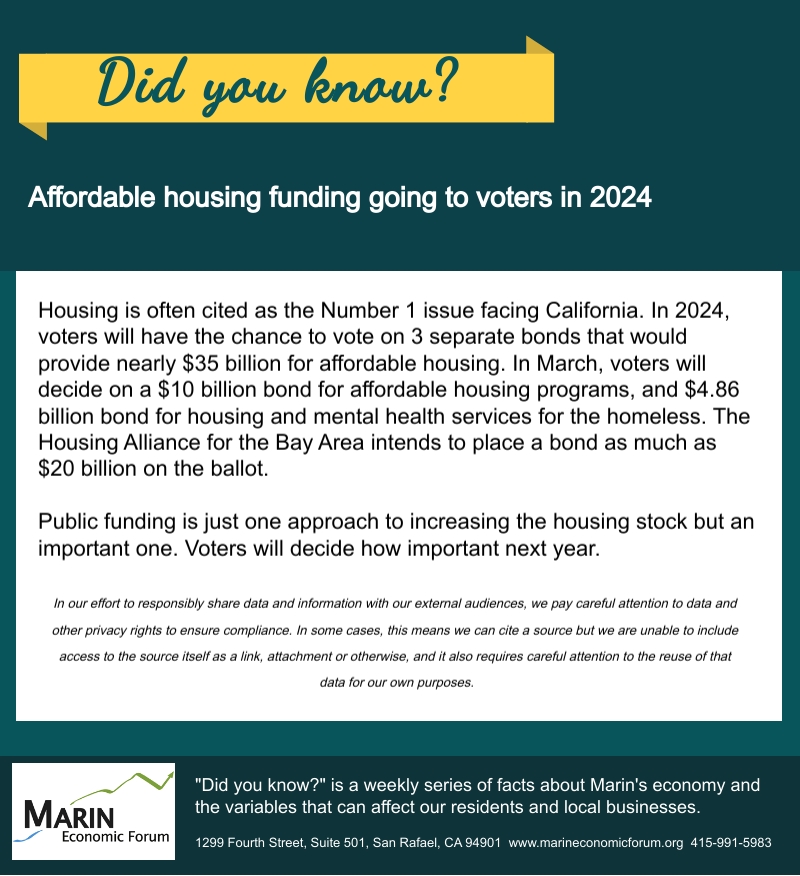
Be the first to receive updates and news from MEF by subscribing or liking us on our social media pages: Facebook, Twitter, and LinkedIn!

Be the first to receive updates and news from MEF by subscribing or liking us on our social media pages: Facebook, Twitter, and LinkedIn!
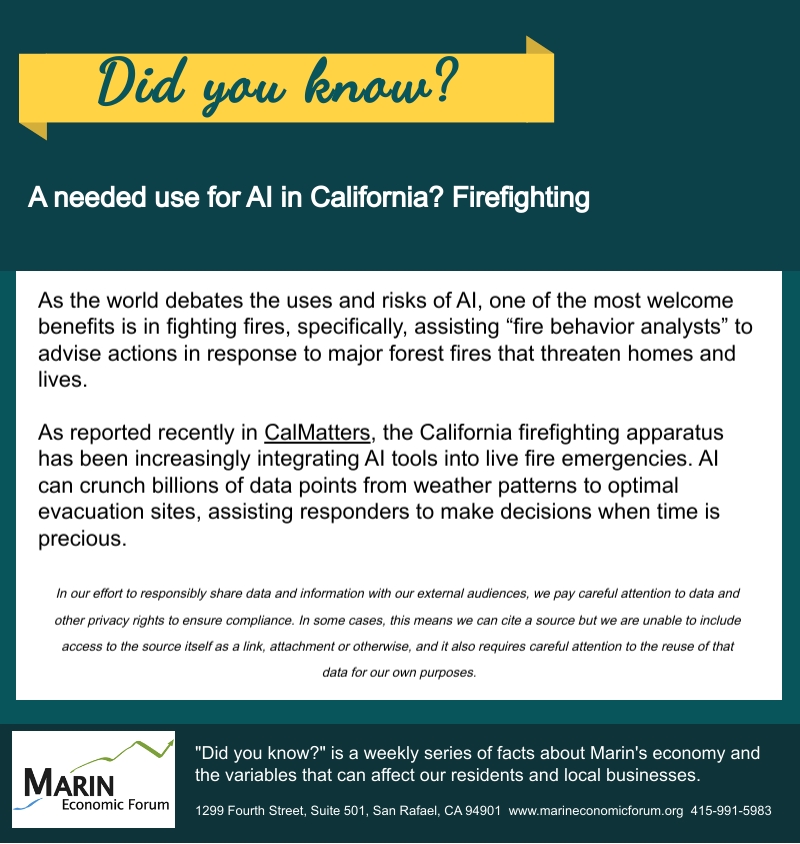
Be the first to receive updates and news from MEF by subscribing or liking us on our social media pages: Facebook, Twitter, and LinkedIn!
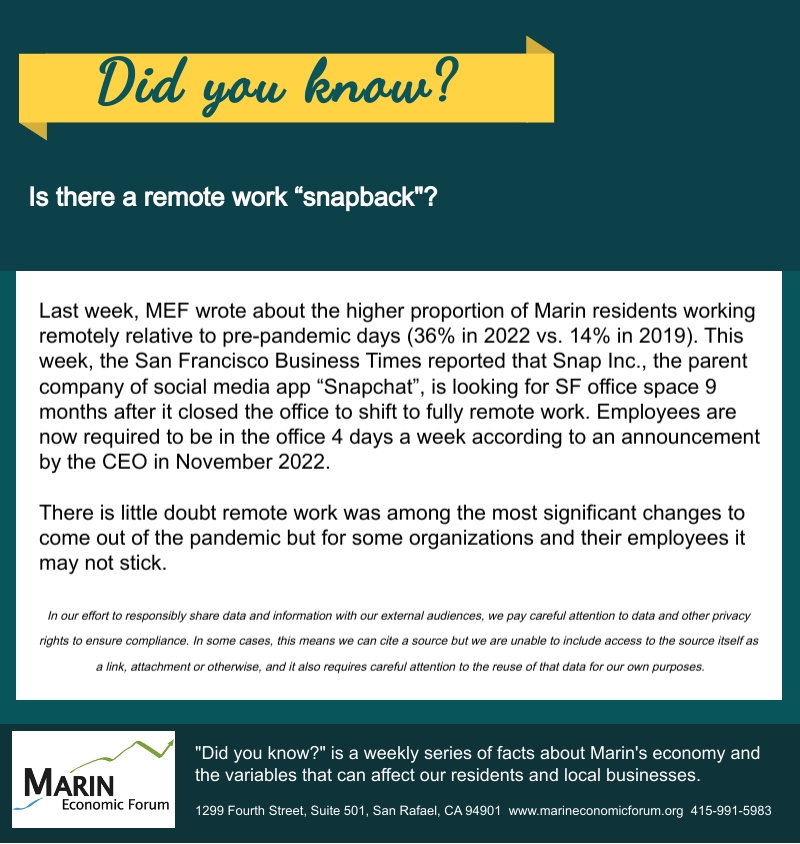
Be the first to receive updates and news from MEF by subscribing or liking us on our social media pages: Facebook, Twitter, and LinkedIn!
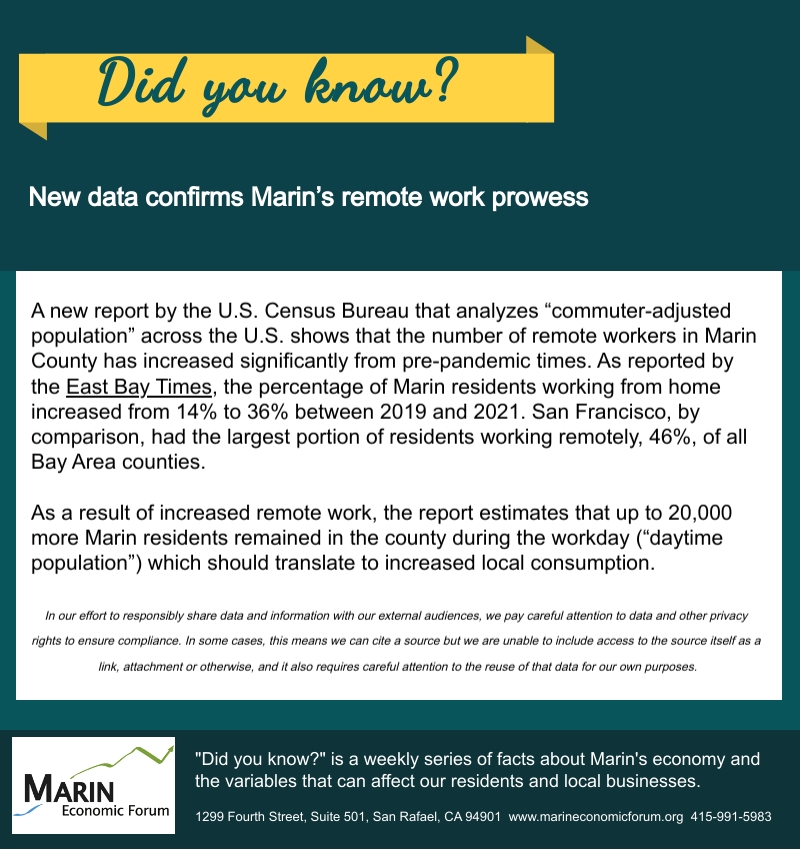
Be the first to receive updates and news from MEF by subscribing or liking us on our social media pages: Facebook, Twitter, and LinkedIn!
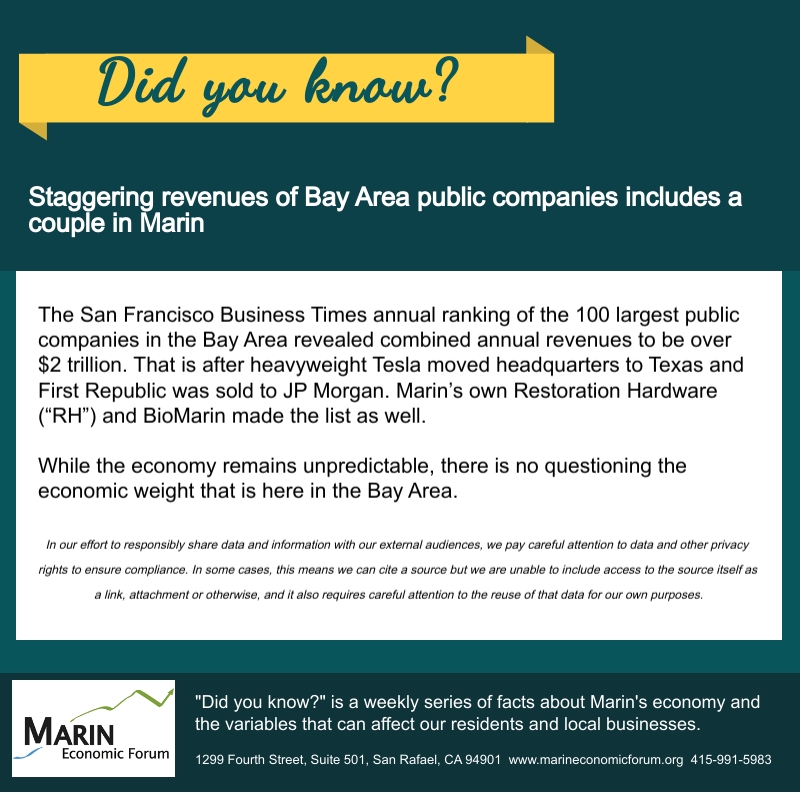
Be the first to receive updates and news from MEF by subscribing or liking us on our social media pages: Facebook, Twitter, and LinkedIn!
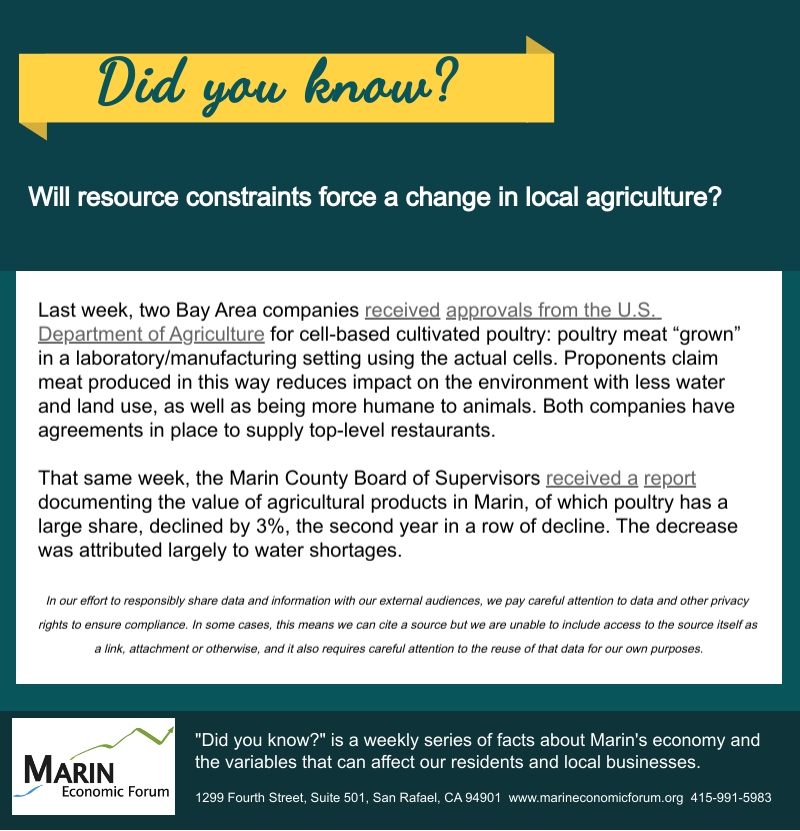
Be the first to receive updates and news from MEF by subscribing or liking us on our social media pages: Facebook, Twitter, and LinkedIn!